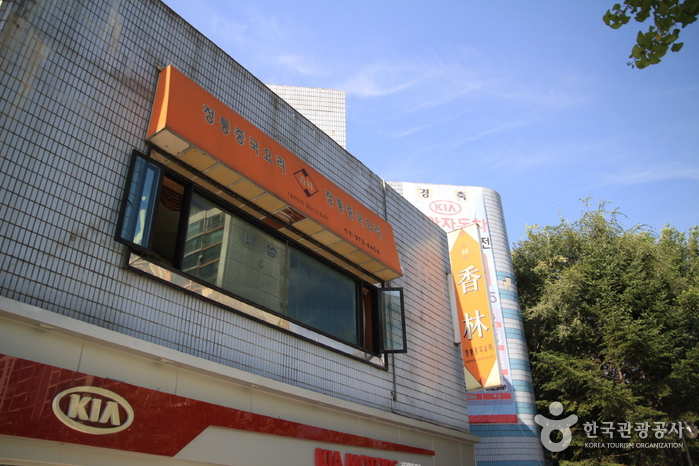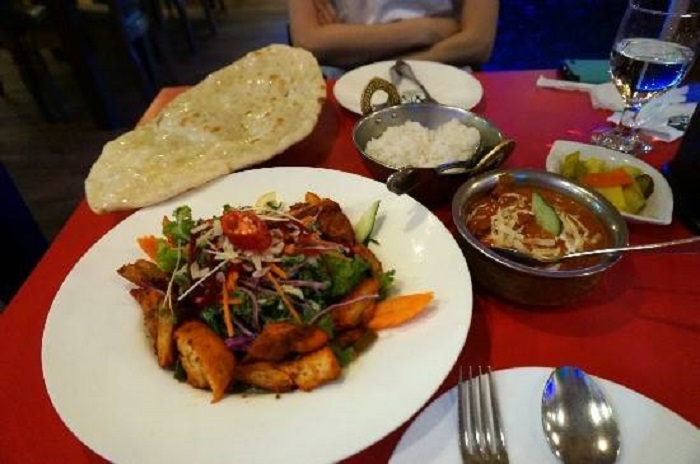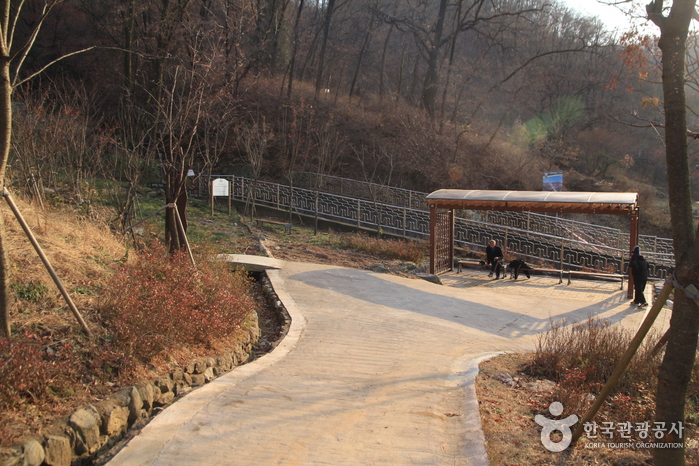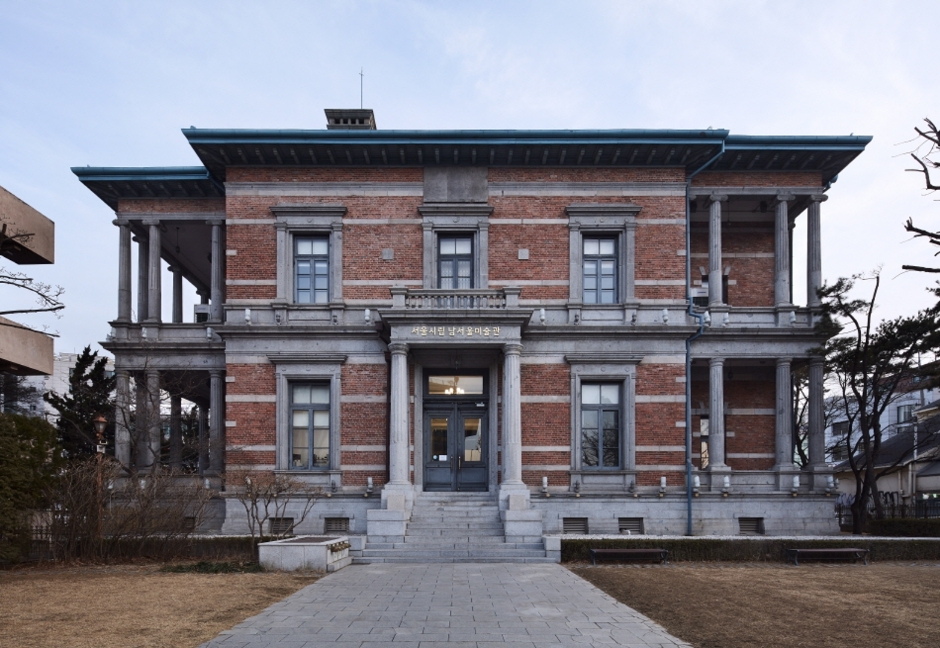Hyanglim (향림)
10.8Km 2021-06-03
127, Hangeulbiseok-ro, Nowon-gu, Seoul
+82-2-976-8800
Hyanglim serves traditional Chinese food using only the freshest seafood, vegetables, and high-grade meat. The cooking of its cuisine is done with true sincerity in order to please the customer's taste buds. The chef also uses all-natural MSG flavoring and small amounts of vegetable oil, making the food less greasy, catering to the tastes of Koreans and foreigners alike. Specialties that guests frequently order are the galbi in spicy sauce, seasoned prawns with vegetables, shark's fin, and crab dishes.
LG Best Shop - Gwanak Branch [Tax Refund Shop] (엘지베스트샵 관악점)
10.8Km 2024-04-18
210, Bongcheon-ro, Gwanak-gu, Seoul
-
Miga Halmae (미가할매)
10.8Km 2021-03-29
374, Sillim-ro, Gwanak-gu, Seoul
+82-2-888-6940
It is one of the 27 traditional restaurants featured in Korean gourmet programs. This restaurant's signature menu is grilled Korean beef sirloin. This Korean dishes restaurant is located in Gwanak-gu, Seoul.
OTSAL (옷살)
10.8Km 2021-03-29
164, Gwanak-ro, Gwanak-gu, Seoul
+82-2-882-6527
This is where a local Mexican chef does the cooking. The best menu at this restaurant is curry. This Korean dishes restaurant is located in Gwanak-gu, Seoul.
National Gugak Museum (국립국악박물관)
10.8Km 2021-08-13
2364, Nambusunhwan-ro, Seocho-gu, Seoul
+82-2-580-3130
The National Gugak Museum opened on February 23, 1995 as the first gugak museum in Korea, featuring approximately 6,000 pieces of gugak-related materials and relics which have both historical and cultural value. It is comprised of seven themed permanent exhibition halls that present 250 pieces of audio and video clips regarding gugak. In the 3D room, visitors can enjoy 3D animation at all times. The museum also hosts special exhibitions in unique and interesting themes.
National Gugak Center (국립국악원)
10.8Km 2025-01-17
2364 Nambusunhwan-ro, Seocho-gu, Seoul
The National Gugak Center is the governing body established to preserve and promote traditional Korean performing arts. The center can accommodate every type of traditional performing arts, such as palace music, court music, and all other genres including major productions of changgeuk (Korean musical drama). Originally opened in Busan in 1951, the center moved to its current location in Seoul in 1987. The center also opened branch locations in Namwon, Jindo, and Busan in 1992, 2004, and 2008 respectively.
Seoul Mangusan Mountain (망우산(서울))
10.8Km 2021-02-10
San 69-1, Mangu-dong, Jungnang-gu, Seoul
+82-2-2094-2395
Mangusan Mountain at 281.7 meters above sea level spans across Mangu-dong and Myeonmok-dong of Seoul, and Guri-si of Gyeonggi-do. Located on the mountain is Mangu Cemetery, which was designated as a public cemetery in 1933. Since its designation, many popular people have been buried here including children’s literature author Bang Jeong-hwan (penname: Sopa), independence activists Oh Se-chang and Han Yong-un, and Ji Seok-young who pioneered the use of the smallpox vaccination in Korea and was also a Korean linguist. In addition, tombstones bearing chronological listings of seven popular poets and one educator were installed at the park, making the cemetery a venue for historical education. The park also has Sin Gyeong-jin Sindobi, a cultural asset designated as Seoul Tangible Cultural Property No. 95. It is a monument of Sin Gyeong-jin, an official scholar of the Joseon dynasty.
The park also has a 5.2-kilometer-long circular road named “The Thinking Path”. The name was selected through a public competition held in May 1998. Other facilities include the urban environment and nature observation road, a wooden gazebo, and a mineral spring. Thanks to the well managed trees and clean air, the park is visited by many citizens seeking a place to rest.
Olive Young - Yangjae Station Branch [Tax Refund Shop] (올리브영 양재역점)
10.9Km 2024-06-26
B2585, Nambusunhwan-ro, Seocho-gu, Seoul
-
Nam-Seoul Museum of Art (SeMA) (서울시립미술관 남서울생활미술관)
10.9Km 2023-10-17
2076, Nambusunhwan-ro, Gwanak-gu, Seoul
+82-2-598-6246
The Nam-Seoul Museum of Art offers visitors a meaningful opportunity to linger beside the traces of history. The building previously served as the Belgian Consulate during the Korean Empire (1897-1910) and has since been designated as a historic Site. It was first constructed in Hoehyeon-dong in 1905 and was relocated to its current location in Namhyeon-dong in 1983. The museum hosts public programs tailored for audiences from various backgrounds in rooms arranged along both sides of a long corridor in the two-story building.

![LG Best Shop - Gwanak Branch [Tax Refund Shop] (엘지베스트샵 관악점)](http://tong.visitkorea.or.kr/cms/resource/59/2880459_image2_1.jpg)




 English
English
 한국어
한국어 日本語
日本語 中文(简体)
中文(简体) Deutsch
Deutsch Français
Français Español
Español Русский
Русский